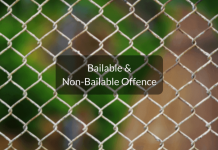This article is written by Abhishek Taneja and Abhinav Aggarwal from Amity Law School, Delhi.
Table of Contents
Introduction
Section 89 of the Code of Civil Procedure empowers the civil courts to refer a matter to alternate dispute resolution methods such as conciliation, arbitration, mediation and judicial settlement via Lok Adalats. However, unlike civil disputes, the scenario in the criminal context changes, the difference between the same has been enunciated as follows:
- ADR in the criminal context represents a shift towards ‘restorative’ justice, which views the crime as the violation of one person right by another and justice in the criminal context should focus on repairing the victim’s harm.
- ADR in the criminal aspect contains an idea of reparation in the transitional justice aspect, which might not be a component of civil mediation. Reparation refers to an act on the part of an offender to do something positive on behalf of the victim and the society which may involve compensation, community services etc., whereby in the civil context it is just a part of the judicial settlement.
- ADR in criminal cases involves the final settlement to be pronounced in the court in various jurisprudences, whereas in civil matters, the same is confidential and simply a matter between the parties.
However, the Indian criminal justice system was not open to the idea to include the option of mediation which is evident from the landmark case of Afcons infrastructure and Ors. v. Cherian Varkey Construction and Ors, in which it was held that criminal cases shall not be decided via alternate dispute resolution methods.
Inclusion of plea bargain
Plea Bargaining is successfully practised in many jurisprudences around the globe and it may be understood as a pre-trial settlement between the accused and the prosecution on the pretext wherein the accused pleads to be guilty in order to receive some concessions by the prosecution. However, the Supreme Court was not always in favour of introducing Plea Bargaining into the Indian criminal jurisprudence, which is evident from the following judgments:
- In Murlidhar Meghraj Loya vs the State of Maharashtra, the Hon’ble Supreme Court was not in favour of the inclusion of the concept of plea bargaining as it intrudes with the fundamental right of a person accused of an offence shall not be compelled to be a witness against himself
- In Kasambhai vs State of Gujarat & Kachhia Patel Shantilal Koderlal vs State of Gujarat and Anr, The apex court, while criticising and regretting the plea bargaining accepted by the magistrate stated that plea bargaining is against public policy. Furthermore, the court also held that plea bargaining was ultra-vires to the society and the Constitution and also that it might encourage collusion, corruption and pollute the pure fount of justice.
- In Thippeswamy vs State of Karnataka, the Court stated that persuading or leading an accused to plead guilty under a promise or assurance would be violative of Article 21 of the Constitution. .
- It was the 154th Report of the Law Commission, which first suggested the inclusion of the concept of Plea Bargaining in Indian Criminal Jurisprudence as an alternate to the traditional dispute resolution via courts and the hence paved way in the Criminal Procedure Code, 1973 (CrPC) as Chapter XXIA, Sections 265 A to 265L through the Criminal Amendment Act, 2005. It allows for plea bargaining for cases wherein the maximum imprisonment is for 7 years, wherein the offence does not affect the socio-economic condition of the country and also where the offence is not committed against a woman or a child below 14 years of age.
Sections that recognise the concept of the settlement are
- Section 265-C (Guidelines for Mutually satisfactory disposition), lays down the procedural guidelines that the court shall follow in a mutually satisfactory disposition. In a case instituted on a police report, the concerned public prosecutor, the investigating officer of the case, the victim of the case and the accused are served notice by the court to participate in the meeting to work out a satisfactory disposition of the case. In a complaint case, only the accused and the victim are served notice by the Court.
- Section 265-D (Report of the mutually satisfactory disposition), lays down the procedure for preparation of the report of mutually satisfactory disposition and submission of the same, while doing so, two situations may arise here namely, which are mentioned in the provision itself, which are:
- If in a meeting under section 265-C, The court prepares the report of the satisfactory disposition, if any, which shall be signed by the presiding officer of the Courts and all other persons who participated in the meeting.
- If no disposition has been worked out, the court shall continue the trial of the accused; with the provisions of the CrPC from the stage of filing of the application under sub-section (1) of the section, 265-B has been filed in such case, after recording the observations of failure of the disposition.
Domestic Courts Perspective
Following the inclusion of Plea bargaining into the Indian Criminal jurisprudence, the courts also accepted the concept of alternate dispute resolution methods, which is evident from the following judgments:
- In Gian Singh v. State of Punjab, Supreme court held and recognised that the outside court settlement was in the exercise of a statutory power of the High Court under Section 482 of the Cr.PC. The Supreme court also held that ”the criminal cases which have an overwhelmingly and predominantly civil flavour, like those of commercial, financial, mercantile, civil, partnership or such like transactions or the offences arising out of matrimony relating to dowry, etc. or the family disputes where the wrong is basically private or personal in nature and the parties have resolved their entire dispute. In this category of cases, the High Court may quash the criminal proceedings if in its view, because of the compromise between the offender and the victim, the possibility of conviction is remote and bleak and continuation of the criminal case would put the accused to great oppression and prejudice and extreme injustice would be caused to him by not quashing the criminal case full and complete settlement and compromise with the victim”
- In K. Srinivas Rao v. D.A. Deepa, the Supreme Court held that the complaint filed under Section 498A of the Penal Code, 1860, though a non-compoundable offence, could be sorted outside the court and suggested that the same shall first be referred to the Mediation centres in appropriate cases if the parties are willing and if it appears to the criminal court that there exist elements of the settlement, therefore, recognising the need for ADR methods in the criminal matters as well.
- In Dayawati v Yogesh Kumar Gosain, The Hon’ble Delhi High Court opined that the Lok Adalat has jurisdiction over only such criminal matters that relate to offences compoundable by law i.e. under Section 320 of the Cr.P.C. or under any special enactment, as per the section 19(5) of the Legal Services Act, 1987. The court also mentioned that section 320 of the CrPC clearly permits and recognizes the settlement of specified criminal offences. The settlement will obviously be only by a voluntary process inter se the parties. To facilitate this process, there can be no possible exclusion of external third party assistance to the parties, say that of neutral mediators or conciliators.
- In Parabat Bhai Aahir @ Parbatbhai Bhimsinhabhai Karmur v. the State of Gujarat, J. D.Y. Chandrachud, speaking on behalf of the three judges bench, upheld the principle of the Gian Kaur judgment and held that the mediation or outside court settlement shall be done only in private matters, like those of commercial, financial, mercantile, partnership or similar transactions with an essentially civil flavour may in appropriate situations and not in those matters, which have a serious impact on the society, heinous and serious crimes like those of murder, dacoity and rape.
- In Yashpal Chaudhary v. State, the Hon’ble Delhi High Court established the guidelines to be followed for the quashing of the cases of serious nature on the premise of a settlement of the dispute entered between the parties. The court laid down the guidelines, which shall be followed in mediation and mutatis mutandis to other ADR methods, which is extracted as below:
“(i) The court while considering reference of the parties to a criminal case to the mediation must before even ascertaining as to whether elements of settlement exist first examine, by preliminary scrutiny, the permissibility in law for the criminal action to be brought to an end either because the offence involved is compoundable or because the High Court would have no inhibition to quash it, bearing in mind the principles that govern the exercise of jurisdiction under Section 482 CrPC, ie, inherent powers of the high court.
(ii) The mediator (before commencing mediation) must undertake preliminary scrutiny of the facts of the criminal case and satisfy himself as to the possibility of assisting the parties to such a settlement as would be acceptable to the court, bearing in mind the law governing the compounding of the offences or exercise of a power of the High Court under Section 482 CrPC. For this, an institutional has to be created in the mediation centres so that there are consistency and uniformity in approach. The scrutiny in above nature would also need to be undertaken, as the mediation process continues, should any such criminal case, as mentioned above, be brought on the table by the parties (for being included in the settlement), as it takes it beyond the case initially referred.
(iii) The system of vetting, at the conclusion of the mediation process, needs to be institutionalized so that before a settlement vis-a-vis a criminal case is formally executed by the parties, satisfaction is reached that the criminal charge involved is which is either compoundable or one respecting which there would be no inhibition felt by the High Court in the exercise of its inherent power under Section 482 CrPC, bearing in mind the relevant jurisprudence.“
The above judgments clearly show that there is a paradigm shift of recognising ADR methods in criminal matters as well. Now, many non-serious and private nature offences are being decided using such methods.
International perspective
- UNITED STATES OF AMERICA: Victim-offender Mediation process is used in the US wherein the victim and the offender of the crime are brought together to meet face-to-face under the structured guidance of a mediator. The mediation may take place at any time during the course of the justice process, but almost all of them take place after court involvement. According to a national survey conducted by the U.S. Department of Justice, about a third of the mediations take place prior to any formal finding of guilt, but over half take place after. Even the severe violent crimes such as serious assault and homicide have been successfully mediated in the USA.
- PHILIPPINES: The Barangay justice system consists of a locally elected Barangay captain and a “peacekeeping committee” hearing cases involving conflicts between residents. There is a mediation session that is facilitated by the captain or another member of the committee. Agreements reached through this process are legally binding and are recognized by the courts. Victim-offender mediation programs were among the earliest restorative justice initiatives.
- CZECH REPUBLIC: The Probation and Mediation Service is involved in pretrial and court proceedings in an attempt to mediate effective and pro-social resolutions to crime-related conflicts. Mediation may only be carried out with the voluntary consent of the two parties. Mediators are skilled in effective negotiations. They help the disputing parties to settle their conflict and to find a mutually acceptable solution to the situation .
- NEW ZEALAND: A Community and family group conferencing model was adopted into national legislation and applied to the youth justice process in New Zealand in 1989. The majorities of cases are handled by the police through and by police-directed or court family group conferencing. It is based on the dispute resolution traditions of the Maori. This model is now also widely used in modified form as a police-initiated diversion approach in South Australia, South Africa, Ireland, Lesotho, as well as in U.S. cities in Minnesota, Pennsylvania and Montana. Each conferencing process has a convenor or facilitator. It brings together the family and friends of both the victim and the offender and sometimes also other members of the community to participate in a professionally facilitated process to identify desirable outcomes for the parties, address the consequences of the crime and explore appropriate ways to prevent the offending behaviour from reoccurring. The mandate of family group conferencing is to confront the offender with the consequences of the crime, develop a reparative plan and in more serious cases in the New Zealand model, determine the need for more restrictive supervision or custody.
- SOUTH AFRICA: Community conferencing is used sometimes as an alternative measure programme to which an offender can be diverted from the criminal justice system . Such programmes tend to be managed by community groups or agencies with or without financial support from the government. The offender’s compliance with the terms of agreement may or may not function under the direct supervision of law enforcement or justice officials. The outcomes of peacemaking meetings are restorative in nature: apologies, restitution and compensation.
- CANADA: Sentencing circles are conducted in many aboriginal communities in Canada. In circle sentencing, all participants: the judge, defence counsel, prosecutor, police officer, the victim and the offender and their respective families and community residents, sit facing one another in a circle. Circle sentencing is generally available to those offenders who plead guilty. The sentencing circle process is typically conducted within the criminal justice process, includes justice professionals and supports the sentencing process The outcome of the circle is generally submitted to the judge, who may or may not have participated directly in the circle, and is not binding on the court. Circle sentencing is an example of how the principles of restorative justice can be applied within a holistic framework in which justice system personnel share power and authority with community members. In contrast to the formal and often adversarial approach to justice, circle sentencing can help reacquaint individuals, families and communities with problem-solving skills, rebuild relationships, promote awareness and respect for values and the lives of others, address the needs and interests of all parties – including the victim, and focus action on causes, not just symptoms of problems.
Conclusion
The Indian Criminal Jurisprudence has moved on from not recognising the concept of Alternate Dispute Resolution in criminal matters to adding the concept of plea bargaining into CrPC and also forming guidelines to recognise the mutually agreed settlement by the parties to the dispute in cases which are not of a serious nature and doesn’t impact the society at a large. Alternate Dispute Resolution is an exception to the traditional court procedures and should be used more comprehensively and regularly. Therefore, such outside court settlements are important to reduce the exorbitant burden on the courts and should also become the ‘new normal’.
LawSikho has created a telegram group for exchanging legal knowledge, referrals and various opportunities. You can click on this link and join:
 Serato DJ Crack 2025Serato DJ PRO Crack
Serato DJ Crack 2025Serato DJ PRO Crack










 Allow notifications
Allow notifications



